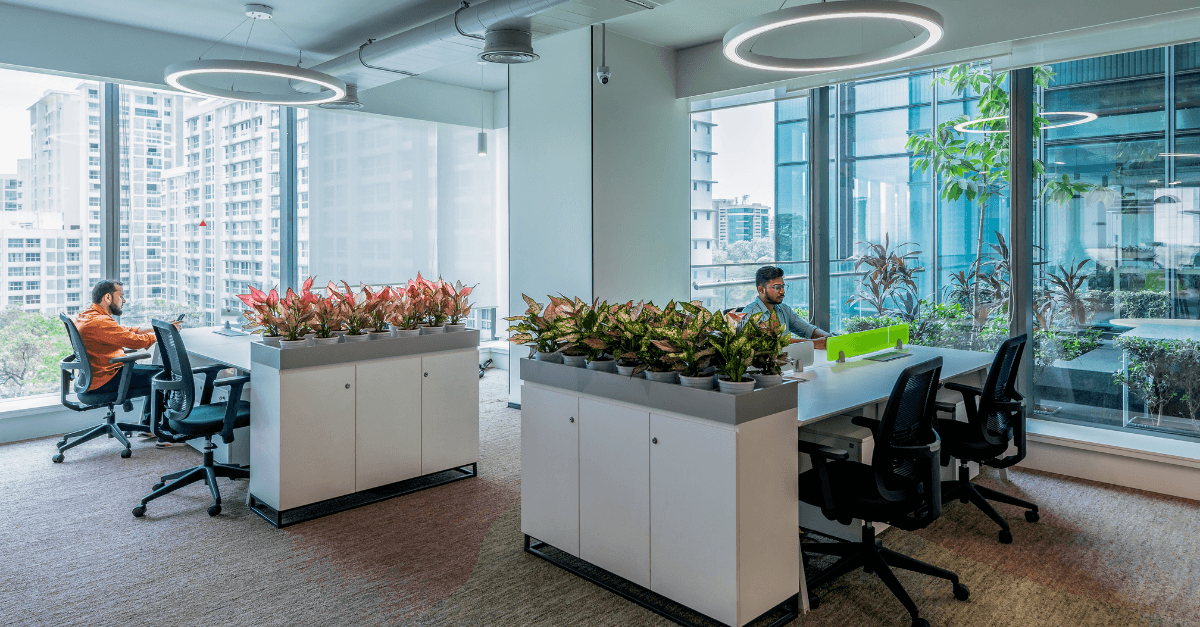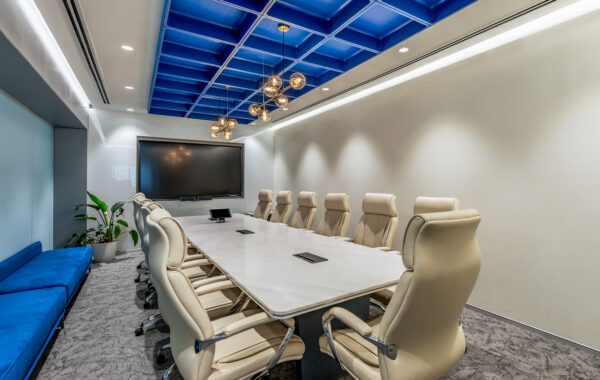
Biophilic Design: Bringing Nature into Workspaces
In today’s fast-paced world, the lines between work and personal life often blur, making the need for a harmonious and healthy workspace more critical than ever. Enter biophilic design, an innovative approach that integrates nature into the built environment to enhance our well-being, creativity, and productivity.
What is Biophilic Design?
Biophilic design is rooted in the concept of biophilia, a term popularized by biologist Edward O. Wilson, which refers to humanity’s innate connection with nature. This design philosophy aims to create environments that mirror the natural world, fostering a sense of calm and inspiration.
The Benefits of Biophilic Design in Workspaces
- Enhanced Well-being: Incorporating natural elements into office design can significantly reduce stress levels and promote overall well-being. Studies have shown that exposure to natural light, plants, and organic materials can lower blood pressure, improve mood, and boost mental health.
- Increased Productivity: A workspace that embraces biophilic design principles can lead to higher productivity levels. Natural light and greenery have been linked to improved focus, creativity, and cognitive function. Employees working in such environments often report feeling more motivated and engaged.
- Improved Air Quality: Plants are natural air purifiers. Including them in office spaces can enhance air quality by filtering out toxins and releasing oxygen. This can lead to fewer sick days and a healthier workforce.
- Aesthetic Appeal: Biophilic design not only benefits employees’ health and productivity but also enhances the aesthetic appeal of a workspace. Natural elements like wood, stone, and water features add a touch of elegance and tranquility, making the office a more pleasant place to be.
Key Elements of Biophilic Design
- Natural Light: Maximizing natural light is a fundamental aspect of biophilic design. Large windows, skylights, and open spaces allow sunlight to flood the workspace, creating a bright and energizing atmosphere.
- Indoor Plants: Incorporating a variety of plants can bring a sense of vitality and freshness to the office. Consider using vertical gardens, potted plants, and hanging greenery to create a lush, inviting environment.
- Natural Materials: Using materials like wood, stone, and bamboo can evoke a connection to nature. These elements add texture and warmth, making the workspace feel more organic and less sterile.
- Water Features: The soothing sound of flowing water can create a calming ambiance. Incorporate water features like fountains or small indoor ponds to bring a sense of tranquility and relaxation.
- Nature-Inspired Art: Artwork depicting natural scenes or abstract pieces inspired by nature can evoke feelings of serenity and wonder. These artistic touches can complement the overall biophilic design theme.
- Outdoor Spaces: If possible, create outdoor areas where employees can take breaks and reconnect with nature. Rooftop gardens, terraces, or courtyards can serve as valuable extensions of the indoor workspace.
Implementing Biophilic Design in Your Office
- Assess Your Space: Evaluate your current workspace to identify areas where biophilic elements can be incorporated. Look for opportunities to maximize natural light, introduce plants, and use natural materials.
- Start Small: You don’t need to overhaul your entire office at once. Start with small changes like adding a few plants, rearranging furniture to allow more light, or incorporating nature-inspired artwork.
- Involve Employees: Engage your team in the process. Encourage them to bring in plants or suggest biophilic design ideas. This can foster a sense of ownership and pride in the workspace.
- Partner with Experts: Consider working with designers or architects who specialize in biophilic design. They can provide valuable insights and help create a cohesive and effective design plan.
Conclusion
Biophilic design is more than just a trend; it’s a transformative approach that recognizes the profound impact of nature on our well-being and productivity. By bringing natural elements into our workspaces, we can create environments that not only look beautiful but also nurture our minds and bodies. As we continue to navigate the complexities of modern work life, embracing biophilic design can be a powerful way to reconnect with nature and enhance our everyday experiences.



